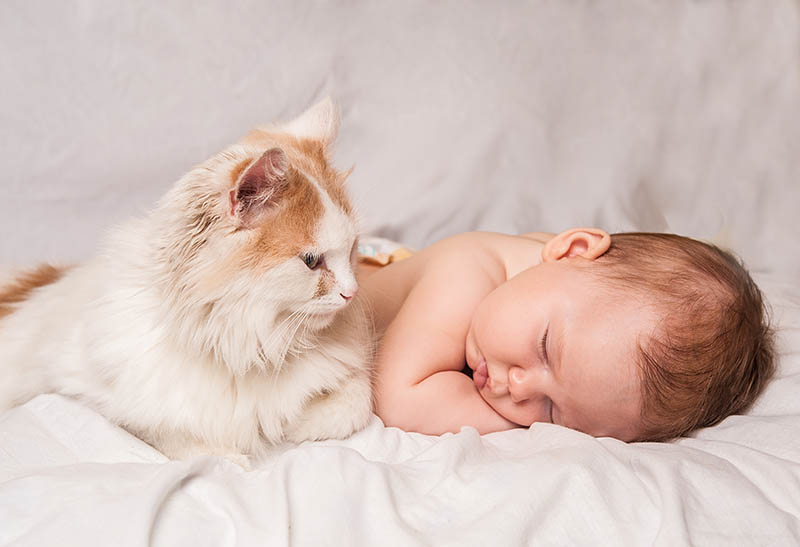Click to Skip Ahead
If you’re getting ready to bring a new baby into your home and you already have a cat, it’s perfectly normal to wonder and stress out about how they will get along. And while there are never any guarantees in life, if you take the time to get your cat ready for a change, there’s a good chance they’ll get along great with your new baby and even grow to be close friends.
Having a baby is something new for everyone involved, but just because they’re both competing for your attention doesn’t mean they won’t like and even love each other!
Helping Your Cat and Baby Be Friends
If you want your cat and your baby to be friends, a little prep work goes a long way. Knowing what to do and taking the necessary steps can ensure everybody gets along, and before long, it can lead to a loving and caring relationship. With that in mind, we’ve highlighted some tips you’ll want to follow.
1. Prepare Your Cat Before the Baby Comes
It’s not impossible for your cat and baby to get along if you don’t prep your pet before the baby comes, but preparing them beforehand makes it a lot easier for everyone. Slowly adjust them to a routine you can keep up with after the baby arrives, and introduce them to all of the new items that you’ll be bringing into your house.
This doesn’t only include new furniture and blankets, but it also includes new sounds and smells. So, you might consider putting some of your baby lotion of choice on your own skin and wearing it months before the baby arrives.
If you can, introduce them to other babies too so that they start to understand what to expect before you have one in the house full-time.
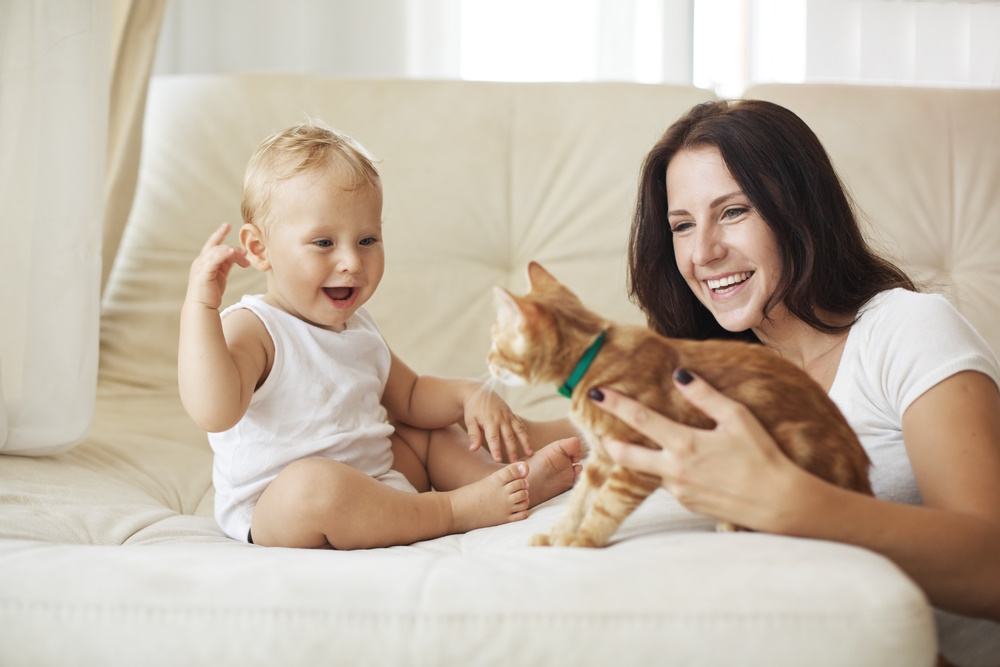
2. Keep Your Cat’s Routine Intact
Your cat wants and desires your attention, and drastic changes to their routine might make them feel a little left out. If you typically play with them at a certain time throughout the day, for example, do your best to keep doing that.
We know that children can present huge challenges to keeping up with your cat’s routine, but the better you can stick with it, the more likely that your cat won’t get too jealous of the new arrival.
3. Make Gradual Changes
Big changes can be hard to adjust to. That’s true for us, and it’s certainly true for your cat. The slower you can make the necessary changes, the better. But of course, no matter how you cut it, the new baby will be a source of stress, so understand that this might take time for them to adjust to.
4. Give Your Cat a Space to Get Away
You want your cat and your baby to get along, and one of the best things you can do is give your cat a space to get away. Be sure to keep your new baby away from this space as they start to grow up and get a little more mobile, as this should be entirely your cat’s space where they can get away from any noise or stress they’re experiencing. They don’t need a huge space, but even an area in the corner with a large cat tower where the kids can’t go can make a huge difference.
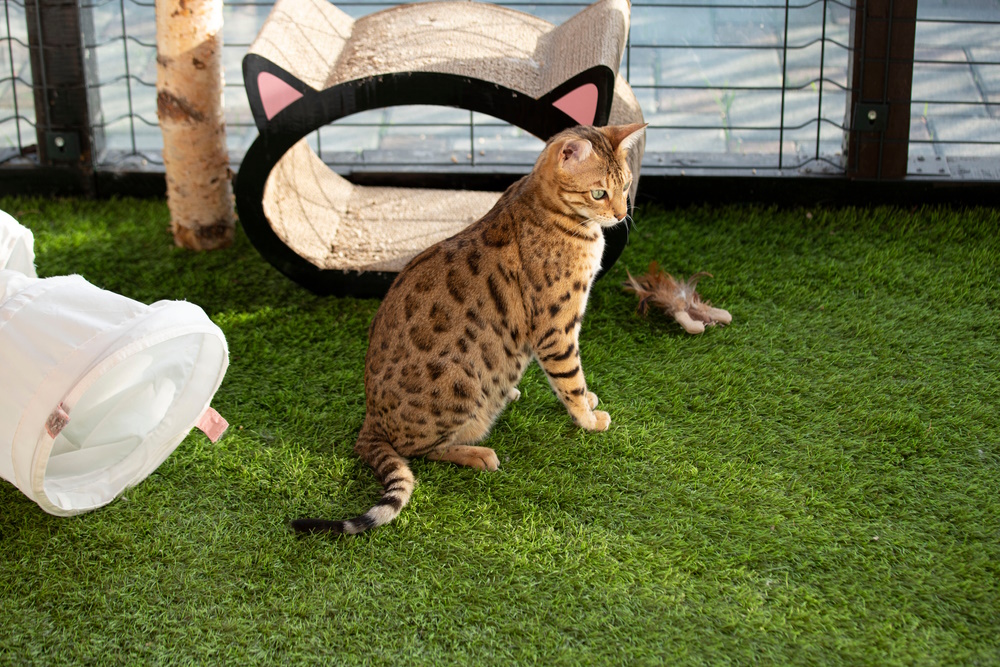
Keeping Your Baby Safe With a Cat in the Home
As long as you do things the right way and your baby doesn’t have cat allergies, there’s no reason you can’t safely have a cat and a baby in the same home. However, there are a few things you should do to keep your new baby safe, and it all starts with being aware of the potential dangers.
1. Suffocating and Smothering
There was once an urban legend that cats would steal babies’ breaths while sleeping. While we now know that this isn’t remotely true, allowing your cat near your baby is a potential risk. Your kitty is certainly just trying to snuggle up with them, but if they accidentally sleep on top of them, it can be dangerous. To combat this, don’t allow your cat near your baby while they sleep. Keep the door closed to any room your baby is sleeping in. If in a room without a door, be sure to put up a baby gate or blockage and supervise them closely.
2. Gastrointestinal Parasites
Gastrointestinal parasites are one of the most commonly known and referenced dangers of having a cat and a newborn baby in the same home. But the good news is that with a few simple precautions, you really don’t need to worry.
Simply ensure you’re cleaning out the litter box while wearing gloves each day, keeping your cat from relieving themselves throughout your home, and not allowing your baby near any stray cats or the litter box. Good hygiene in general goes a long way in helping keep this away from your baby.
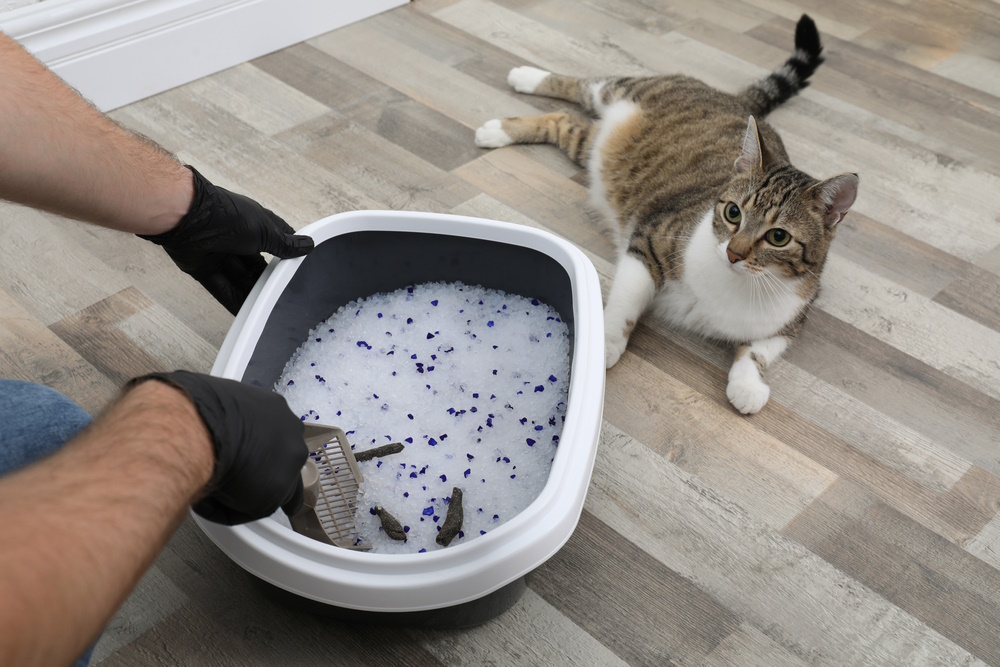
3. Scratches & Bites
Scratches and bites aren’t a concern with most cats, but if your cat feels cornered by a baby or has their tail grabbed, it’s certainly a possibility. Do your best to keep your cat as happy as possible and keep their routine normal. Even still, you’ll want to monitor interactions between your cat and your newborn.
Frequently Asked Questions
Do I Need to Rehome My Cat When the Baby Comes?
No! There is no reason to say goodbye to your cat when the baby arrives. As long as you take safety precautions and prepare your cat, there is no reason the two can’t live together and even be friends.
Will My Cat Get Jealous of My Baby?
It’s possible. Cats can and do get jealous from time to time, and signs of jealousy include things like urine marking, excessive meowing, and destructive behavior. To reduce the chances of this, stick to your cat’s normal routine if possible, offer them plenty of attention, allow them to continue to use their favorite spots in the home, and be prepared to meet any negative behaviors with patience instead of punishment.
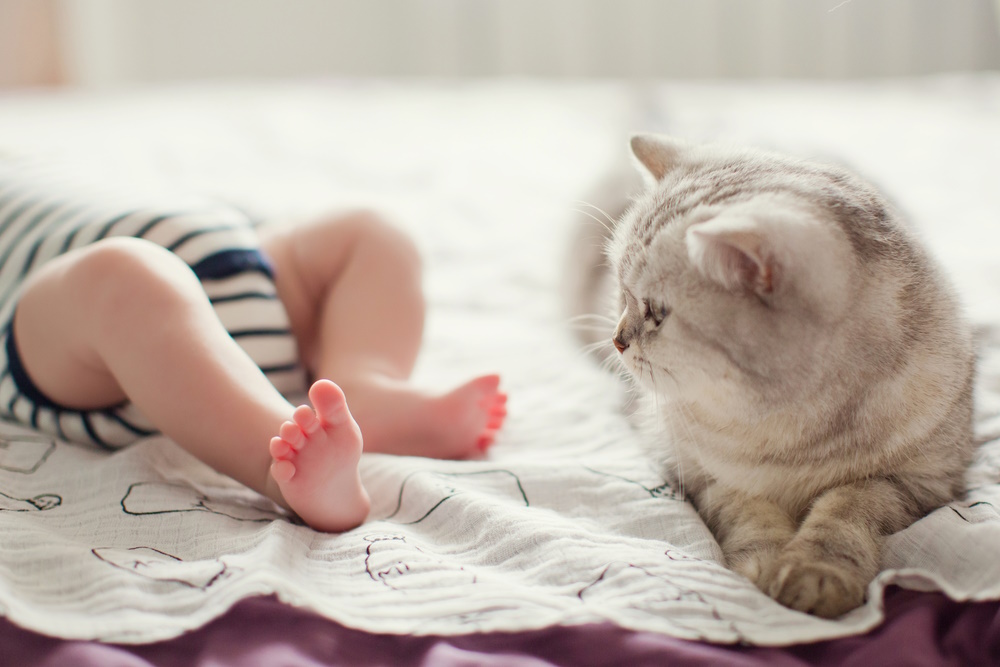
Final Thoughts
Remember that bringing a baby into your home is going to be a big change for everyone, including your feline. Do your best to get them ready beforehand, and once you bring your baby into your home, don’t forget about them.
Give them time to adjust, keep loving on them, and before long you’ll find your baby and your cat getting along better than you ever dreamed possible!
Featured Image Credit: Sharomka, Shutterstock

